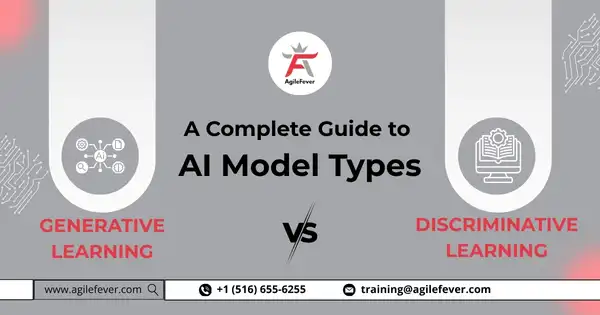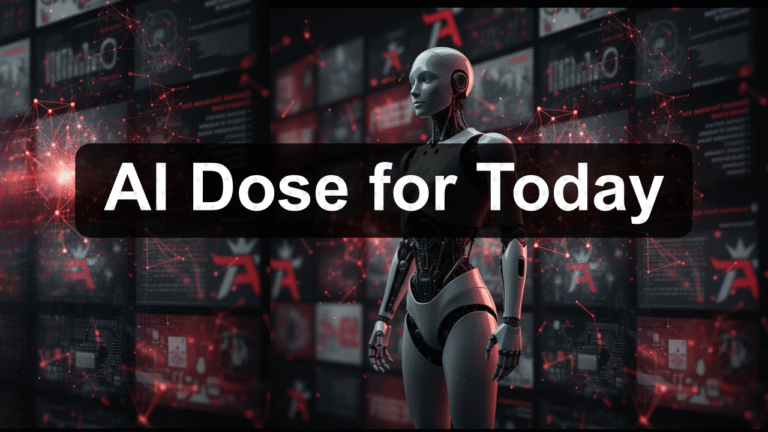The evolution of deep learning depends not just on smarter algorithms but on faster hardware. Neural networks today contain billions of parameters that need constant matrix operations, demanding high-speed parallel processing. That’s where Jay Cuda comes in. Developed by NVIDIA, CUDA (Compute Unified Device Architecture) allows developers to directly program GPUs to perform large computations simultaneously instead of sequentially. It’s the backbone behind every advanced AI framework, from training large-scale models like GPT to powering real-time inference in autonomous systems. CUDA bridges the gap between code and silicon, turning general-purpose GPUs into dedicated AI accelerators. Without it, the current boom in machine learning, computer vision, and generative AI would be far slower, costlier, and less accessible.
What is CUDA and why is it Essential?
To understand the significance of Jay Cuda, it’s important to compare how CPUs and GPUs approach computation. CPUs execute tasks one at a time with high precision. GPUs, on the other hand, are built for concurrency, handling thousands of smaller tasks in parallel.
CPU vs GPU: Why GPUs Changed the Game
| Aspect | CPU (Central Processing Unit) | GPU (Graphics Processing Unit) |
| Cores | 4–16 complex cores | Thousands of simpler cores |
| Execution | Sequential task processing | Parallel execution of many tasks |
| Ideal For | Logic, single-thread tasks | Matrix operations, AI, image processing |
| Throughput | High per-core power | High total throughput |
In deep learning, almost every operation, from convolutions to back propagation, involves matrix math. GPUs thrive on these repetitive computations. CUDA gives developers a way to directly program GPU cores, optimizing how these matrix calculations execute.
Why It Matters
- Parallelism: CUDA splits tasks into thousands of lightweight threads.
- Speed: Training times reduce from weeks to hours.
- Efficiency: Workloads scale automatically with the number of GPU cores.
- Flexibility: Developers can mix C++, Python, and CUDA kernels for custom performance.
Essentially, Jay Cuda transformed the GPU from a gaming processor into the single most critical hardware component for deep learning.
The Role of CUDA in Training AI Models
Frameworks like PyTorch and TensorFlow rely heavily on jay cuda for computation. When developers call functions like model.cuda() or tensor.to(“cuda”), they’re transferring data and operations from the CPU to GPU memory managed by CUDA.
How CUDA Accelerates Model Training
- Efficient Memory Management
- CUDA optimizes how data moves between system RAM and GPU VRAM.
- It minimizes latency through asynchronous transfers and caching.
- Kernel Execution
- Each mathematical operation (addition, multiplication, activation) is handled by thousands of GPU threads at once.
- CUDA kernels control how these threads run, synchronize, and share memory.
- Parallel Gradient Computation
- Backpropagation, once the slowest process, now runs in parallel across all layers.
- GPUs handle thousands of matrix multiplications simultaneously, making training feasible for billion-parameter models.
Example
Without CUDA, training a ResNet-50 model on ImageNet would take over a week on CPUs. With CUDA acceleration, it can complete in under 24 hours using NVIDIA GPUs.
CUDA also powers cuDNN, NVIDIA’s Deep Neural Network library. cuDNN provides optimized implementations for common AI functions like convolution, pooling, and activation. It integrates directly into frameworks like PyTorch and TensorFlow, ensuring developers don’t have to manually manage low-level GPU details.
In short, CUDA acts as the invisible engine making AI frameworks scalable. Without Jay Cuda, today’s advanced models simply wouldn’t be trainable in realistic timeframes.
How CUDA Optimizes Deep Learning Frameworks
The true genius of Jay Cuda lies in how it squeezes every drop of performance from GPU hardware. Instead of just speeding up operations, CUDA fundamentally restructures how data flows during computation.
Key Optimization Techniques
| Optimization Method | Functionality | Benefits of AI Training |
| Kernel Fusion | Combines multiple GPU operations into one | Reduces memory access overhead |
| Mixed Precision (FP16) | Uses half-precision arithmetic | Doubles speed with minimal accuracy loss |
| Tensor Cores | Specialized units for matrix math | Boosts training of transformer models |
| CUDA Streams | Runs operations asynchronously | Prevents idle GPU cycles |
| Unified Memory | Automatically handles CPU-GPU data sharing | Simplifies development and increases efficiency |
Real-World Impact
- Training Time: Reduces by 40–60% for large models.
- Power Consumption: GPUs complete tasks faster, lowering energy use.
- Scalability: Multiple GPUs can be used seamlessly via CUDA libraries like NCCL.
When frameworks such as TensorFlow perform automatic differentiation, CUDA executes each step through these optimizations. Developers see faster results without needing to rewrite their models. It’s why Jay Cuda is not just a performance enhancer; it’s the foundation that enables the deep learning revolution.
CUDA Beyond Deep Learning
While its popularity stems from AI, Jay Cuda is far more versatile. It underpins almost every field requiring large-scale computation.
1. Scientific Research
CUDA accelerates physics simulations, fluid dynamics, and molecular modeling. NASA and CERN use CUDA-powered clusters for simulations that would otherwise require supercomputers.
2. Financial Analytics
In finance, GPUs analyze millions of market scenarios in real time. CUDA enables faster Monte Carlo simulations for risk assessment, pricing models, and algorithmic trading.
3. Healthcare and Imaging
Hospitals leverage CUDA for medical imaging reconstruction, diagnostics, and drug discovery simulations. MRI processing that took hours can now finish in minutes.
4. Robotics and Automation
Modern robotics relies on instant perception and rapid decision-making. Robots process streams of video, LiDAR, and sensor data to understand their environment and act safely. GPU acceleration enables these systems to analyze multiple inputs at once, allowing simultaneous mapping, motion planning, and object detection.
In autonomous vehicles, this parallel processing lets onboard computers interpret camera feeds, identify road signs, and track nearby objects in real time. Industrial robots benefit in similar ways, optimizing assembly-line precision and adapting quickly to variable conditions. High-speed computation ensures smooth, coordinated motion and safe operation, both in manufacturing and field environments.
Hardware acceleration has become the core engine that allows modern robots to learn, adapt, and react almost instantly.
The Future of AI Acceleration
As models grow larger and more complex, Jay Cuda continues evolving to meet scaling challenges. NVIDIA’s new hardware and CUDA releases focus on improving multi-GPU efficiency, energy optimization, and automated scheduling.
Emerging CUDA Capabilities
- Multi-GPU Training
- Uses NVLink and NCCL to connect GPUs into one virtual device.
- Enables distributed training for trillion-parameter models.
- CUDA Graphs
- Records a sequence of GPU operations as a reusable graph.
- Eliminates repetitive kernel launches, reducing overhead.
- Dynamic Parallelism
- Allows GPU threads to spawn new threads autonomously.
- Ideal for reinforcement learning and adaptive networks.
- TensorRT Integration
- CUDA pairs with TensorRT to optimize models for deployment.
- This combination ensures inference is as fast as training.
What It Means for Developers
- Less manual optimization, CUDA automates most low-level operations.
- More compatibility, supports both research and production environments.
- Higher efficiency, better utilization of GPU memory, and compute power.
These innovations ensure Jay Cuda remains central as AI progresses into real-time, multi-modal systems capable of text, image, and video generation simultaneously.
The Best AI Bootcamps Teach You CUDA
Developers who truly want to excel in AI engineering need to understand how GPUs work under the hood. That’s why professional AI bootcamps emphazise JAY CUDA in their advanced tracks.
Why CUDA Skills Matter
- Speed Optimization: Understanding GPU limits helps fine-tune batch sizes and learning rates.
- Model Deployment: CUDA knowledge aids in exporting models that perform well in production.
- Resource Efficiency: Saves time and cloud costs by minimizing GPU idle cycles.
Bootcamp Learning Approach
| Aspect | Traditional Courses | Modern Bootcamps (Agile Fever) |
| Focus | Theoretical models | Hardware-optimized AI development |
| Practical Labs | Limited exposure | Hands-on CUDA kernel coding |
| Outcome | Academic understanding | Deployable, high-speed AI models |
| Mentorship | Passive lectures | 1-on-1 project feedback |
Students work on practical CUDA labs, such as writing their own convolution kernels, profiling GPU performance, and benchmarking models. This bridges the gap between algorithm design and system-level optimization.
By learning CUDA fundamentals early, learners become more valuable in AI teams that care about both accuracy and execution speed. That’s why professional programs invest time teaching Jay Cuda; it’s not an optional add-on but a foundational career skill.
Conclusion
The Jay Cuda ecosystem proves that AI progress depends on speed, not just intelligence. It has redefined what’s possible in deep learning, powering everything from generative art tools to autonomous systems. For engineers, learning CUDA means gaining control over performance, a critical advantage in a competitive AI landscape. If you’re serious about understanding how machine learning models truly operate beneath frameworks like PyTorch and TensorFlow, now’s the perfect time to dive deeper.
Join our masterclass for free and explore more with Agile Fever. Learn GPU acceleration, CUDA fundamentals, and deployment strategies directly from industry mentors. Build, optimize, and scale AI models that perform faster and smarter in the real world.
FAQs
What is CUDA used for in deep learning?
It enables GPUs to run thousands of mathematical operations simultaneously, accelerating neural network training and inference.
Is CUDA only for NVIDIA GPUs?
Yes. It’s a proprietary technology built exclusively for NVIDIA hardware.
Can beginners learn CUDA programming?
Absolutely. Anyone familiar with Python or C++ can start with simple kernel examples before integrating with AI frameworks.
Why is CUDA important for AI engineers?
It allows engineers to optimize runtime performance, making large-scale training practical.
How does CUDA help frameworks like PyTorch?
It provides GPU-accelerated backends for tensor operations, ensuring faster model training and testing.
Does CUDA also speed up inference?
Yes. It accelerates both training and deployment, reducing latency for real-time applications.
Is CUDA knowledge required for MLOps?
It’s highly valuable for optimizing resource allocation and scaling GPU clusters.
Can CUDA be used outside AI?
Yes, in gaming, finance, scientific computing, and robotics — anywhere high-performance parallel processing is needed.
What is mixed-precision training in CUDA?
It uses FP16 arithmetic to double the speed while preserving model accuracy.
How can I start learning CUDA effectively?
Enroll in structured courses that teach both GPU theory and practical application with frameworks like TensorFlow or PyTorch.



